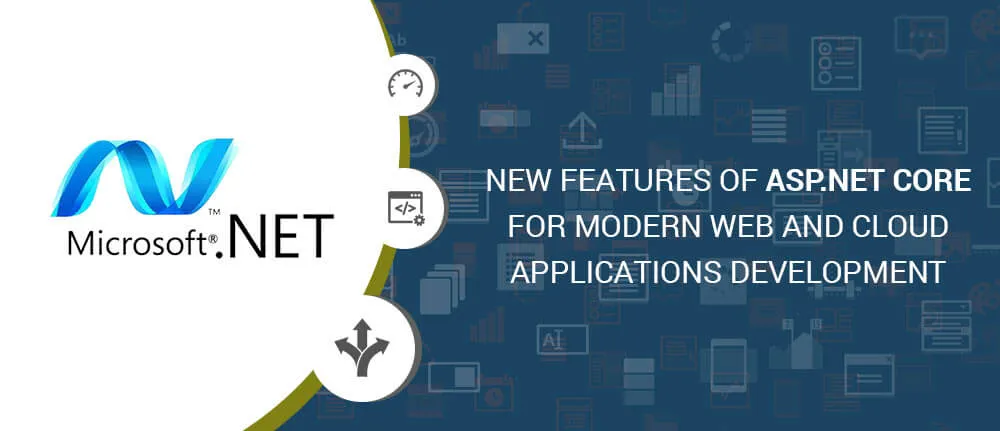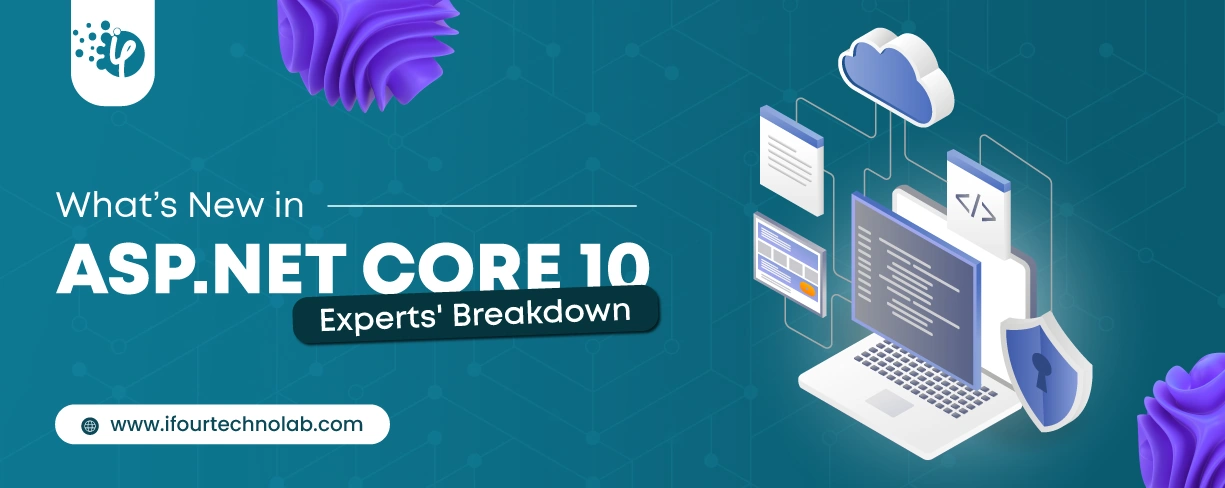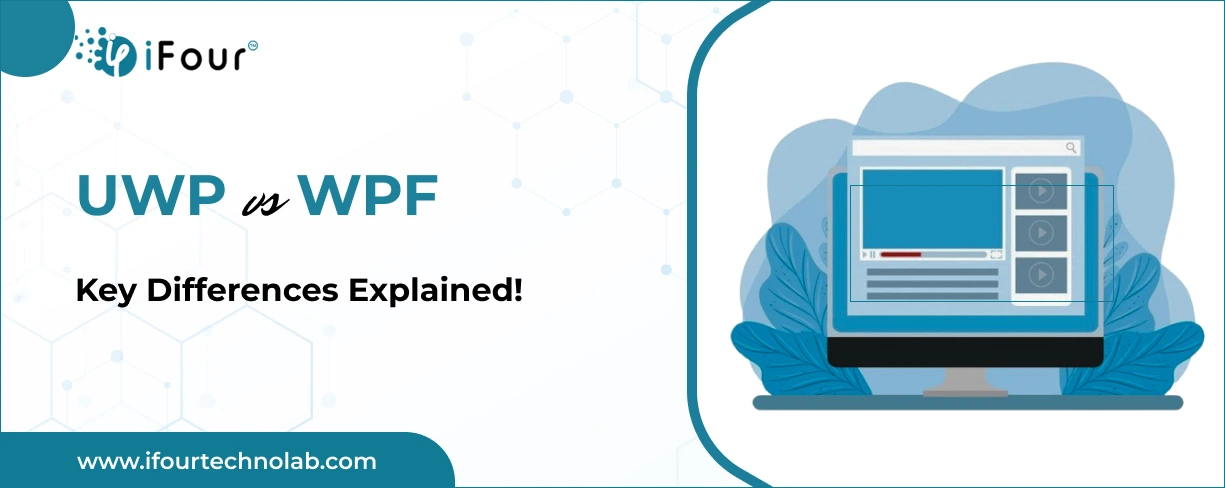What’s New in ASP.NET Core 10 – Key Features & Expert Insights
We tracked the evolution of .NET 9 on Reddit, and watched the heated debates on .NET 6 vs .NET 8. And just when we thought that things had finally settled, Microsoft drops another...
Listening is fun too.
Straighten your back and cherish with coffee - PLAY !

ASP.Net Core is one of the most successful and stable development framework built by Microsoft. With every update, new features are added that help ASP.NET Software development companies to deployed highly scalable and high-performance web applications
Within the framework itself, there are numerous feature available to help you overcome common development challenges, and boost the performance of your application.
Some of the new features to build a better application with ASP.Net Core are as follows:
Using .NET core it's possible to deploy and run an application on different platforms such as Linux, Windows, and macOS. The system allows the .NET developers to deploy the latest technologies like Microsoft Azure, Docker, Kubernetes, and others. For all these, the .NET core SDK provides many command-line tools that help create, compile, build and publish a .NET Core application on any OS.
Performance standard is an important aspect of every software. Microsoft recommends .NET core with ASP.NET core for the best scale and performance. This becomes more important when hundreds of micro services could be used. By the introduction of ASP.NET core, ASP.NET considered as one of the fastest web application frameworks available. To take advantage of asynchronous programming models, the new Kestrel web server was redesigned from the ground up, which is more lightweight, and fast!. Therefore, ASP.NET Core is a great framework from the perspective of code development in the ASP.NET Software Companies.
With the introduction of ASP.NET Core, The three software ASP.NET, Web API, and MVC merged together into one unit
As we know Using MVC we can create web applications that served up HTML and Web API was designed to create RESTful services using JSON or XML. While with ASP.NET Core, MVC and Web API have been merged together. As we know, a lot of overlap between these two frameworks. With ASP.NET Core we have the new Razor Pages. They extend the MVC framework to allow encapsulating concept by using two-way binding. So they are sort of a replacement for Web forms while using the Razor syntax. In MVC 5, controllers inherit from the System.Web.Mvc.Controller base class to serve over the HTTP requests whereas webApi2 controllers inherit from System.Web.Http.ApiController for creating RESTful Web services using JSON & XML. Now with ASP.NET Core Web API and MVC have been merged together, due to that development becomes simpler.
Internationalization involves Globalization and Localization. We all know that it’s a critical aspect of every application. So, the multi-nationalization features like based on culture selection with a request allowed cultures, content localization are provided by ASP.NET Core.
ASP.NET makes it easy to localize dates, numbers, and the text within your web application. If you want your application to be used across the global, localization will be very important to you.
ASP.NET allows customizing your application for multiple languages via resource files. That is considered as the common repository for all where all the values are stored, and then in a web application should able to read resource file and display labels. There are two types of resources:
Local Resources – This is specific for a page (i.e., there will be local resource file for every page)
Global Resources – This is common for the whole website (i.e., one resource file accessed by all pages)
You will also see specific cultures and neutral cultures. For example, the culture “en” is the neutral English culture, while “en-US”, “en-GB” and “en-AU” are the English specific cultures for the United States, Great Britain, and Australia respective.
One of the most amazing features is introduction of new environment mode. ASP.NET Core has built-in feature of environments, which helpful for different locations your code might be running. It allows you to easily differentiate parts of your code for their behavior in development, staging, production, etc.
It’s possible we need to configure our application based on the environment where the application is running. We can use specific services and features in development mode as well as in release mode.
It’s a particular environment variable, ASPNETCORE_ENVIRONMENT is used to describe the application environment which is currently running in. We can set any values to this variable, but it has a limitation of three values are used by development, Staging and Production environment. By default, that environment is not set for production. For that, we have to use IhostingEnvironmnet anywhere in our application to check the current environment.
ASP.NET Core provides conceptual knowledge of these three environments by default, and provides inbuilt methods for working with them:
Development - Identified using IHostingEnvironment.development()
Staging - Identified using IHostingEnvironment.IsStaging()
Production - Identified using IHostingEnvironment.IsProducation()
ASP.NET Core has been a great upgrade over last release versions. In this article, we highlighted some of the common key features you should aware of. For building modern cross-platform web applications which excel in scalability and performance, .NET development companies should choose ASP.NET Core which is definitely the great option to go with.

We tracked the evolution of .NET 9 on Reddit, and watched the heated debates on .NET 6 vs .NET 8. And just when we thought that things had finally settled, Microsoft drops another...

Several experts, particularly those just starting out, often find themselves confused about WPF and UWP, wondering if they are the same. Since they are used to create great UIs for...

Many companies rely on advanced technologies to make informed decisions in their business. For instance, some Chief Technology Officers (CTOs) turn to Power BI consulting services,...